How to keep slugs from eating hostas is a common concern for many gardeners. Slugs are hosta’s number 1 enemy and, thus, especially annoying to a hosta enthusiast. If you find a lot of ragged holes in your hostas, you’re most likely up against slugs.
To keep slugs from eating hostas, plant resistant hosta varieties, including Sum and Substance and water early morning to prevent moist conditions in the evening when slugs are most active. Heavy slug infestations can be treated with organic slug baits, such as Sluggo.
There are many other ways to keep your hostas safe from garden slugs. The best approach is to choose and employ a combination of techniques to drive slugs away from your hostas and restore the health of the plant.
How To Keep Slugs From Eating Hostas
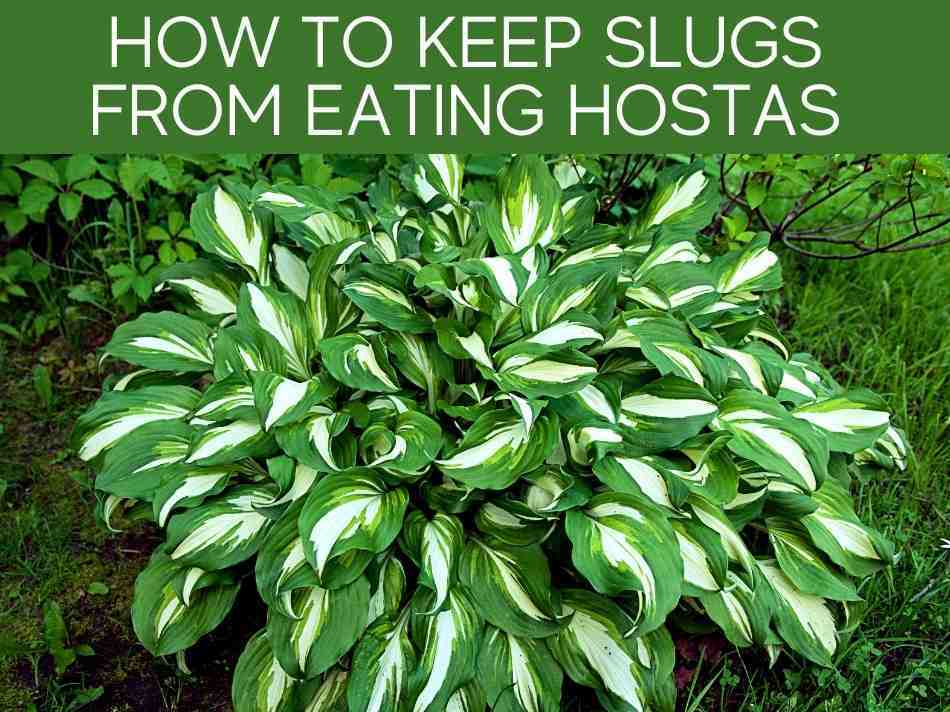
If slugs are a problem in your garden, hostas are one of their favorite plants that will be attacked.
If you don’t want to find those unsightly holes in your hosta plants, there are multiple ways to keep slugs and snails away from hostas.
One of the most effective ways to keep slugs off the most vulnerable plants is to create barriers with slug repellent material.
Surrounding the hostas with abrasive material such as crushed eggshells, dry sand, diatomaceous earth, wood shavings or coffee grounds can effectively keep slugs at bay.
These barriers are only effective when dry. Other than eggshells, you’ll need to replenish the barriers each time it rains.
All of these abrasive materials make it difficult for the slug’s slimy body to crawl over and reach your beautiful hostas..
Certain materials such as egg shells, coffee grounds and wood shavings will enrich the soil with nutrients as they decompose and seep into the ground.
How To Stop Slugs And Snails Eating Hostas
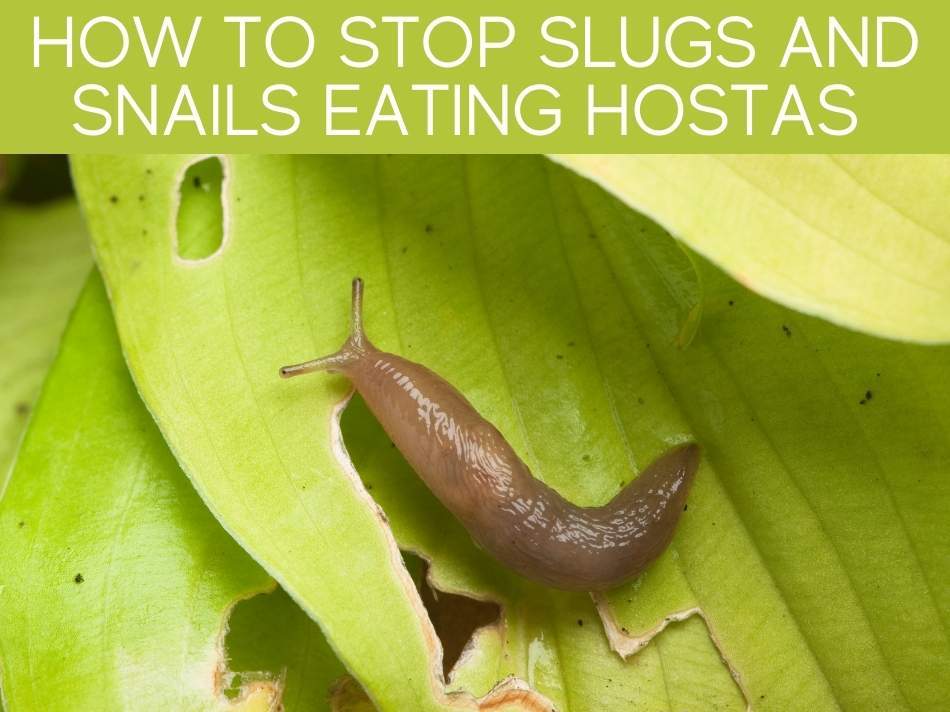
Slugs can be annoying to many varieties of plants, but they are especially destructive to hostas.
They eat away the foliage very quickly, creating massive damage in just a few days.
It’s important to stop these pesky creatures before they create havoc in your garden.
Creating copper barriers around the plants is an effective way to stop slugs and snails from causing damage to hostas.
Self-adhesive copper tape can be placed around the rim of the pot if growing hostas in containers.
Copper ring bands can be placed around young hosta plants growing in the garden bed.
Slugs don’t cross copper boundaries since copper is known to react with the slime on their body to create an effect on their nervous system similar to a small electric shock.
As a natural instinct, slugs tend to stay away from copper and even if they do try to cross the boundary, the electric shock will remind them to keep away.
How To Stop Slugs And Snails Eating Dahlias
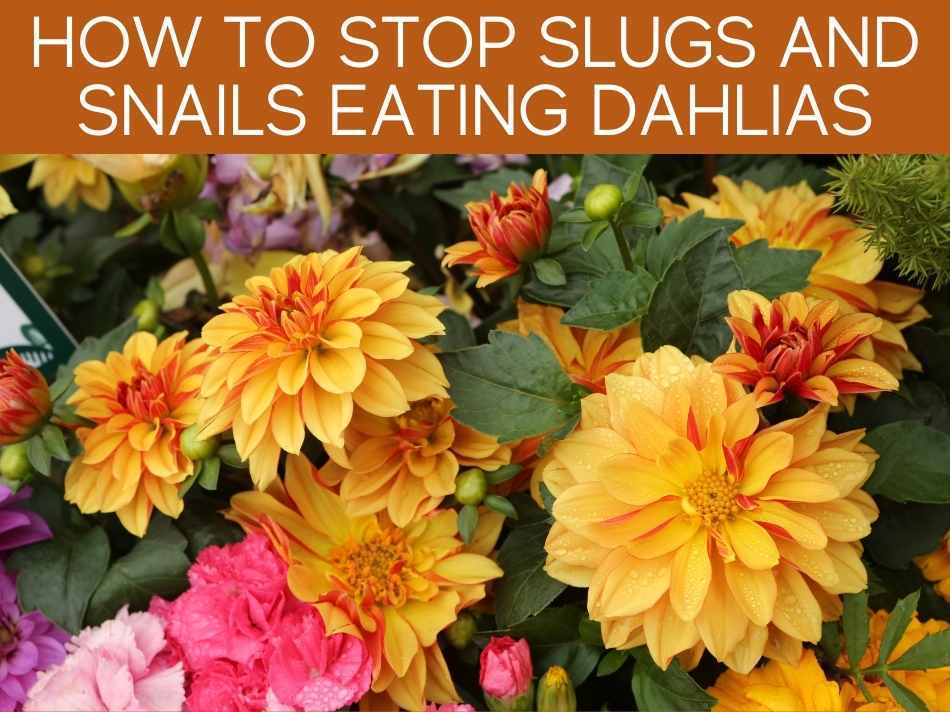
Dahlias are among slugs’ favorite snacks, especially young dahlia leaves.
You’ll need to be especially careful when the dahlias are just above the ground since slugs and snails can destroy them quickly while they’re still young.
Pick any slugs that you find on or around the plants and either destroy them or transfer them to a location where they can’t cause any harm.
This method is best performed in the evening when the slugs are out to feed.
Go out to your dahlias planting bed in the evening with a flashlight to hunt for slugs and drive them out of the garden.
As you handpick slugs from the plants, drop them in saline water with 1 part salt and 7 parts water.
Leave them in the saline solution for 48 hours to kill the pest before disposing.
How To Stop Slugs Eating Bedding Plants
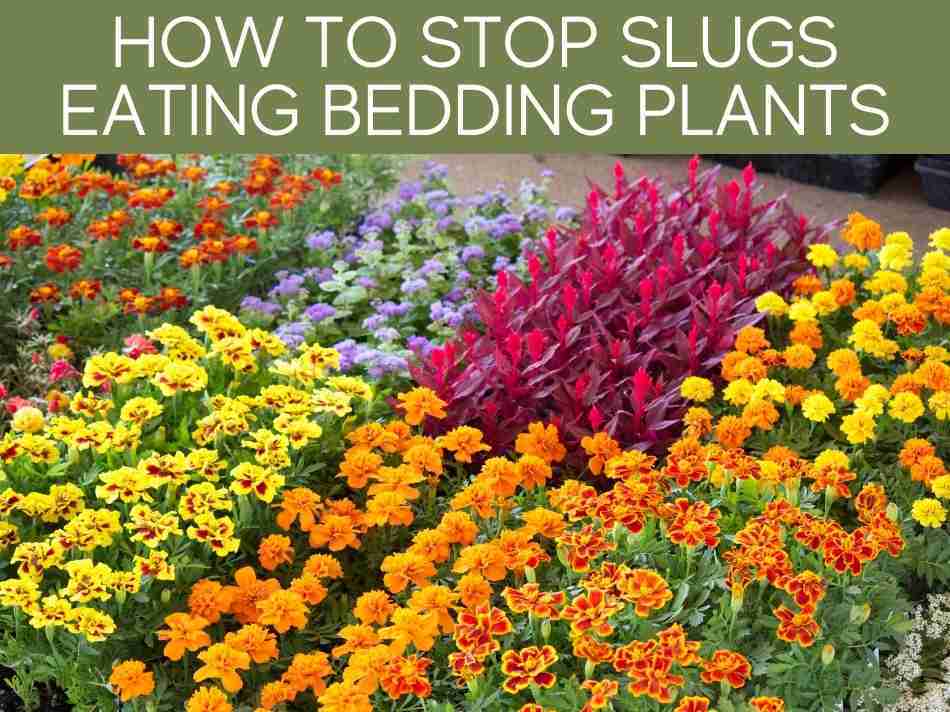
Slugs are a common sight in the garden, and though they are cute to some people, there are many plants that will suffer damage from their existence.
Slugs love to eat many annuals and perennials grown as bedding plants.
If you want to save your bedding, grow slug-resistant plants, including begonias, creeping jenny, geraniums, fuchsias, and gazanias.
Other than planting the right varieties, keep the garden bed free of loose mulches where slugs may hide and water early in the morning to give the garden bed to dry out before evening when the slugs start their activity.
Moist conditions encourage slugs, making it easier to crawl around the garden bed and dry conditions, in contrast, make it difficult for them to crawl on the ground.
How Do I Get Rid Of Slugs In My Grass
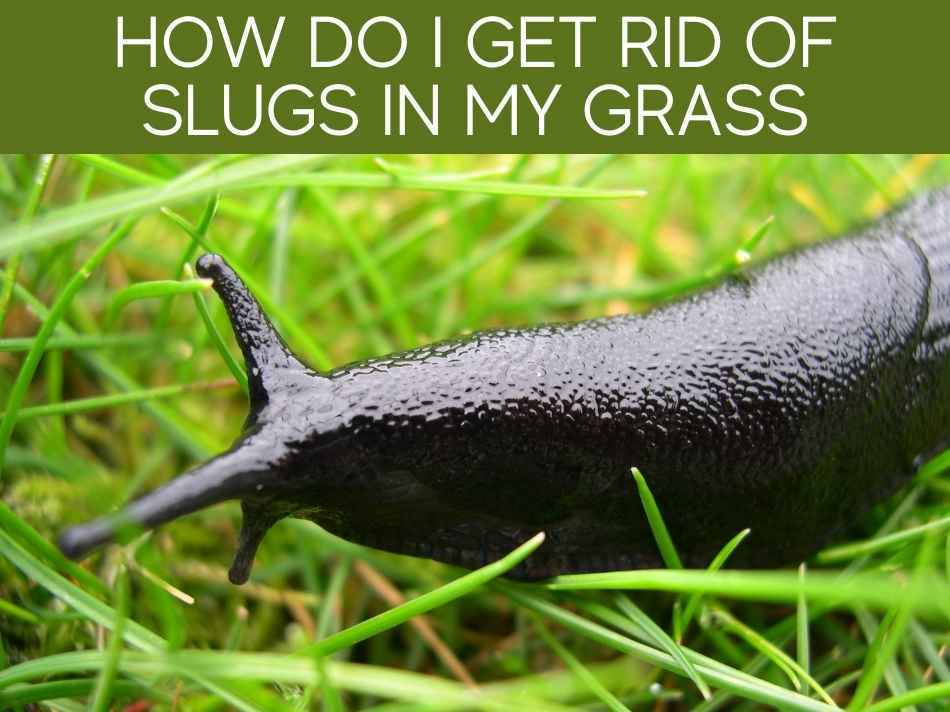
Slugs love crawling around on the grass, eating whatever green or decaying that comes in their way.
If there are many slugs in your grass, there are high chances that the critters won’t just damage the grass but the plants you have growing around the garden as well.
Beer traps are one of the most effective and popular ways for getting rid of slugs in the garden.
Bury several shallow containers at intervals around the grass with the rim in line with the soil surface and fill them with beer.
The beer will drive snails and slugs towards itself and drown them in the container.
Empty and refill the container every other day or as they fill up with slugs.
If beer is not available, you can also fill the container with yeast solution which will create results just as good.
How To Get Rid Of Slugs In Lawn
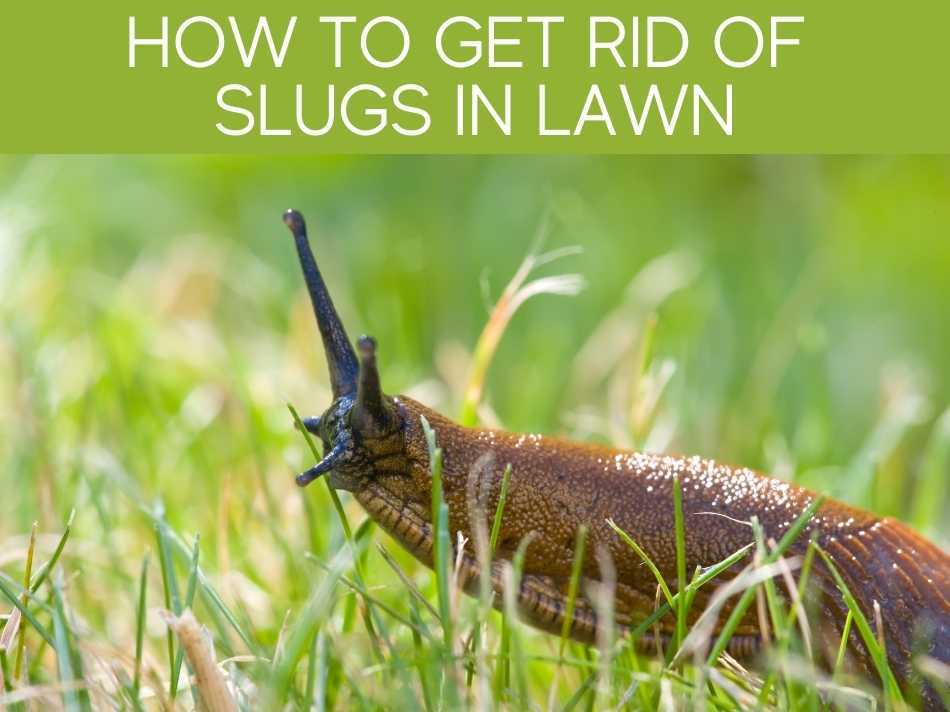
Slugs in the lawn are a common problem in the garden, especially during moderate, humid climates.
Slugs love it on rainy days, which is when they come out in the evening, feed on their favorite plants, leaving holes on the foliage around your garden.
The best way to get rid of slugs is to create inhospitable conditions for them in your lawn.
Clean the garden area getting rid of mulches, fallen leaves and plant debris.
Doing so will take away the hiding spots for the slugs and they’ll move elsewhere to seek shelter.
Also reduce ground cover plantings in the garden, especially those growing around the targeted plants.
How To Rid Of Slugs Organically
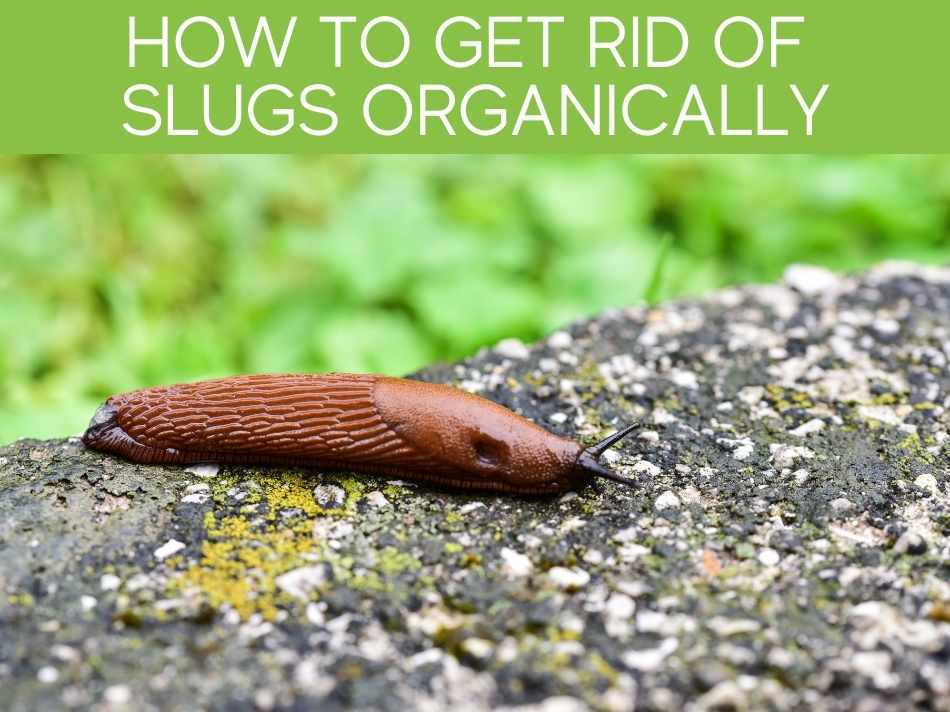
If you’re facing heavy slug infestations in your garden, there are many organic control methods you can employ which work just as good as non-organic pesticides.
Though metaldehyd-based slug baits are available at garden centers, they are not organic and negatively impact the wildlife in your garden and the environment.
Non-organic slug baits are especially unsuitable for use on food crops.
Organic slug management includes iron phosphate-based slug baits sold under the names Sluggo, Safer’s Slug and Snail Bait and Escar-Go.
Sprinkle the slug bait sparingly around the most vulnerable plants.
Slugs will stop feeding as soon as they eat the bait and will die within the next few days.
These organic slug pellets only work against slugs and snails and are non-toxic to other animals.
Unlike traditional slug baits, organic slug baits can be used around vegetable crops without fearing any damage.
Check out our full article on how to get rid of slugs naturally.
How Do You Get Rid Of Slugs In The House
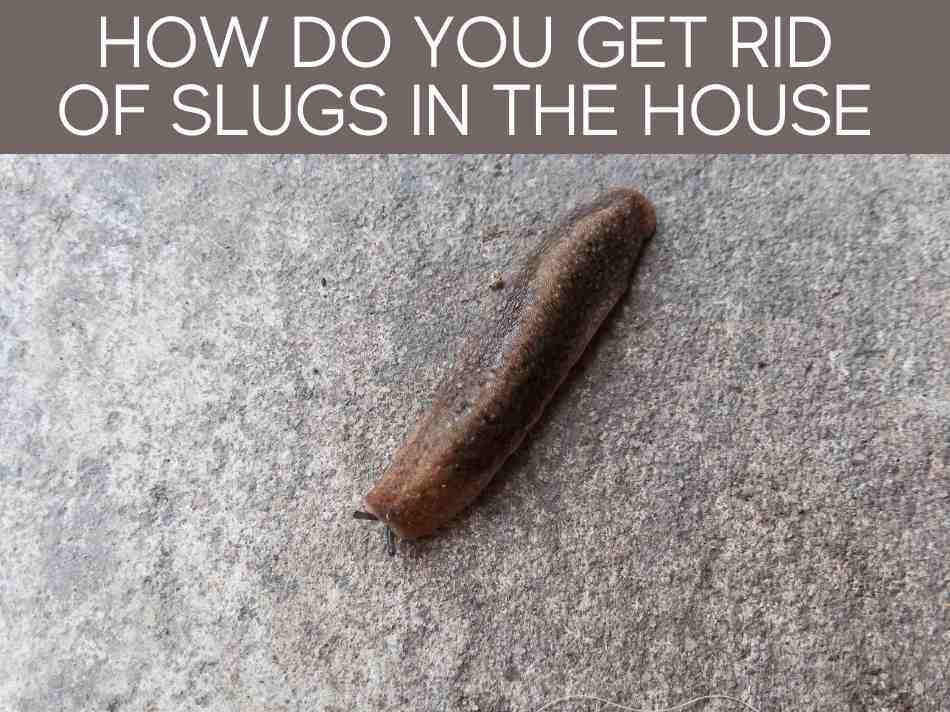
Slugs visit your house because they find many attractions in the area.
Plants to feed on, shelter in the form of mulches and plant debris and moisture to keep their bodies hydrated are among the top reasons for slugs to stay in your garden.
Besides keeping all the favorites to a minimum, what else can you do to make your house and garden unwelcoming to these pests?
Think about the natural predators of garden slugs and introduce and encourage them in the house.
Ground beetles, birds, toads and turtles are natural predators to slugs.
Domesticated fowl, including ducks and chicken also feed on slugs, keeping their population down.
Try to include more of these predators in your garden to keep out the slugs.
Nematodes also kill slugs by penetrating their bodies and killing them from within.
They are available under the name Nemaslug at garden centers to be dissolved in water and applied to the soil to get rid of slugs.
How To Keep Slugs Out Of Your Garden
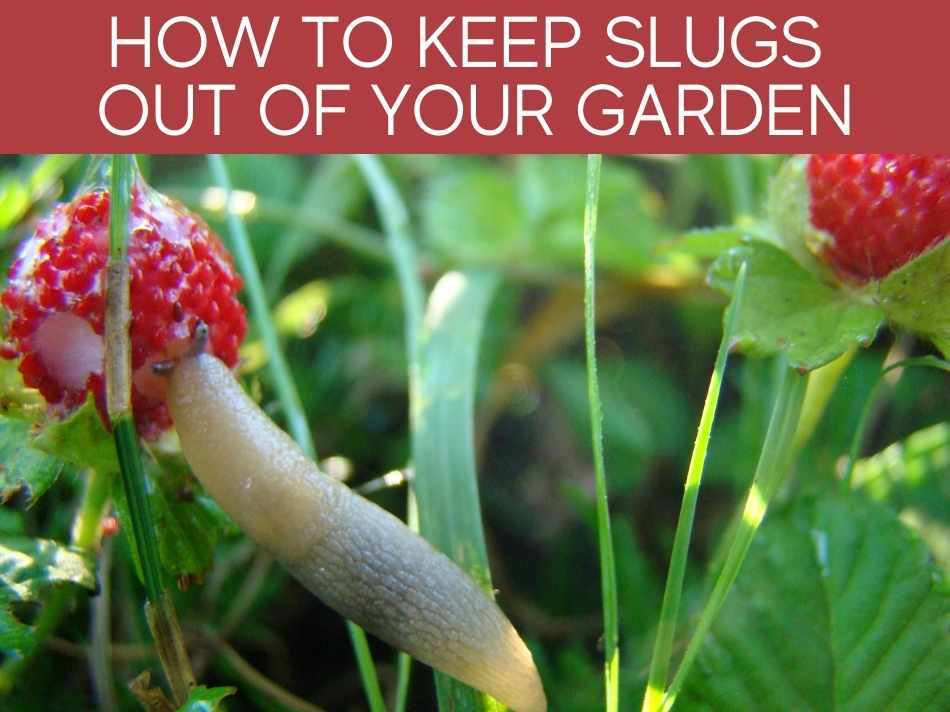
Keeping slugs out of your garden is easy if you design the landscape intelligently.
Since you have plants that slug love around the area, it’s only fair to have those that slugs hate too.
Companion planting with slug-repellent plants can help make your garden unattractive to slugs.
Alyssum, azaleas, daffodils, parsley, mint, and red cabbage are some of the plants that slugs don’t like eating.
Plant slug-unfriendly plants among other plants in your garden to discourage slugs and snails and drive them away from the garden.
Check out our complete article on getting slugs out of the garden.
Bordering vegetable gardens or plants that are most likely of slug damage with slug-repellent plants is also an effective technique to keep out these pests.
If you have strawberries, see our complete guide to keeping slugs out of strawberries.
Conclusion
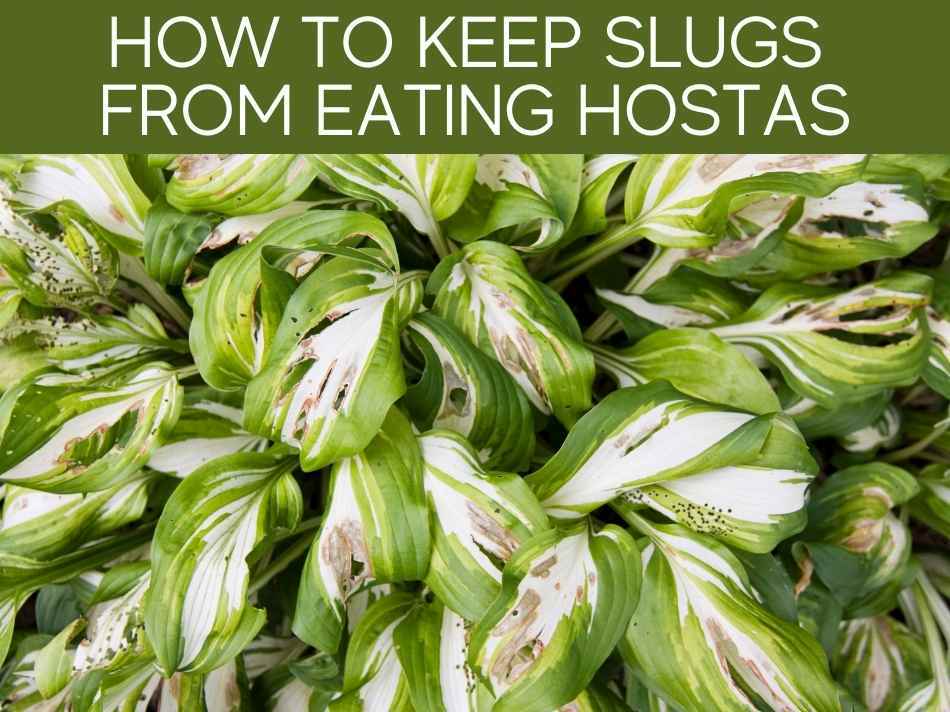
If slugs are repeatedly bothering your plants, it’s about time you take action.
Follow a strong slug control program from the beginning of the growing season to keep infestations at bay and ensure healthy, damage-free plants in your garden.
